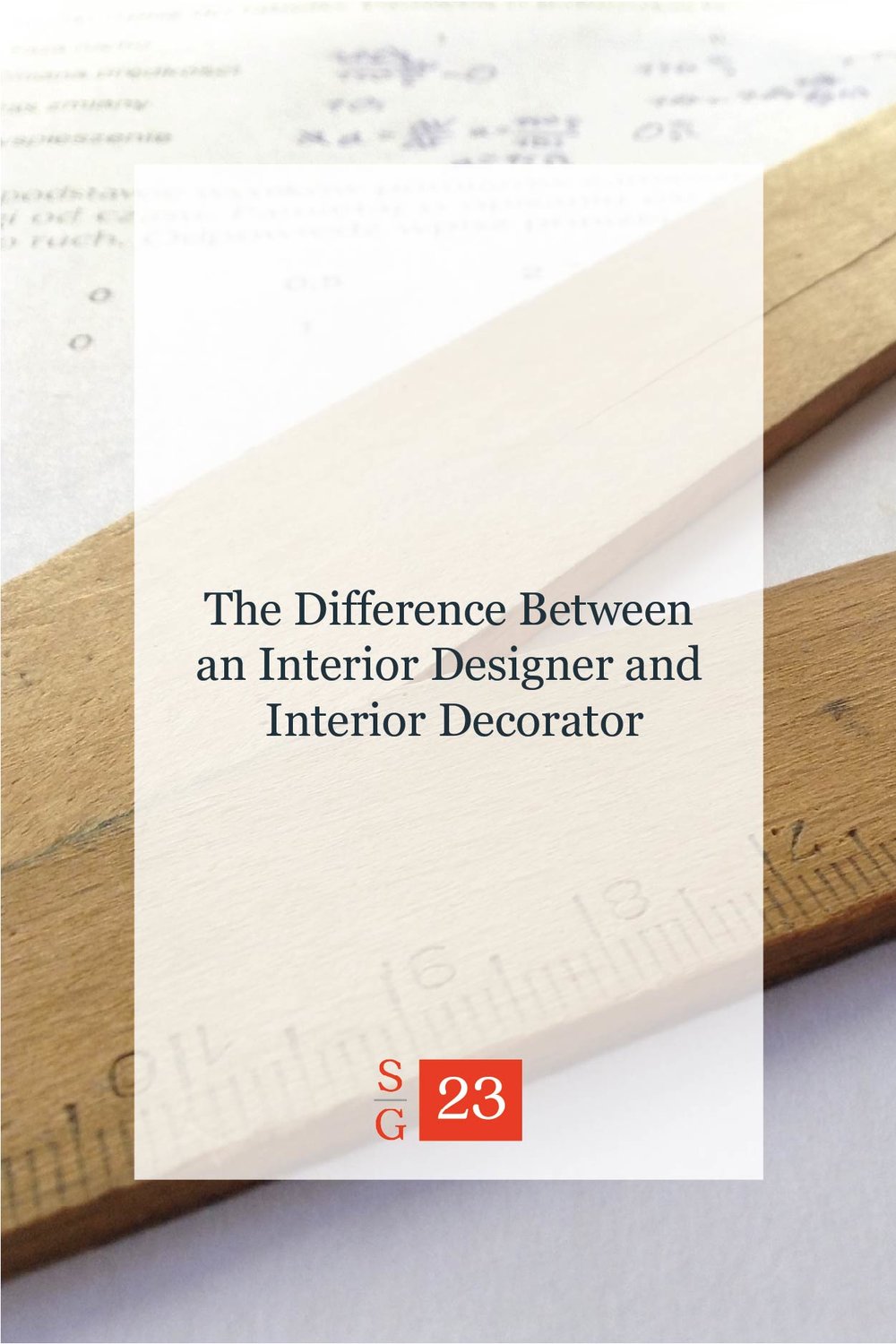Difference Between an Interior Designer and Interior Decorator
When I meet with prospective clients, one of the first things I often need to explain is exactly what I do. Most non-designers assume that I'm an interior decorator, when I'm in fact an interior designer—they are not the same thing.
The terms interior designer and interior decorator are used interchangeably, but these professions are different in significant ways and influences what kid of work they can do. In general, interior designers (especially those that are NCIDQ certified) are required to have more credentials—similar to what would be expected of an architect or engineer.
1. "Interior designers may decorate, but decorators do not design" - NCIDQ
As defined by the Council for Interior Design Qualification
"Interior design is the art and science of understanding people's behavior to create functional spaces within a building."
"Decoration is the furnishing or adorning of a space with fashionable or beautiful things."
An interior designer, such as myself, has the ability to both design and decorate. I also worked in architecture and interior architecture for several years at an award-winning architecture firm before focusing on my own studio, so I have a strong understanding of construction and communicate well with architects and contractors. I can design anything within the structural shell of a building, including but not limited to kitchens, bathrooms, staircases, casework, electrical plans, decorative ceiling details, and custom furniture. In addition, I can also select items such as furniture, plumbing fixtures, light fixtures and all materials and finishes.
2. Interior decorators require no formal training or licensure
In theory, anyone could wake up one day and declare themselves an interior decorator, but this is not true of interior designers. Interior designers are required to study interior design at a CIDA (Council for Interior Design Accreditation) accredited college or university. These are typically 4-year bachelor degree programs. There are times when interior decorators claim to be interior designers when they haven't had any formal education. This is not to say that all interior decorators lack formal education—many do take courses, but they are not required to study interior decoration so it's up to you to do your research and ask the right questions when hiring a professional.
No big deal, right? Oh, but it is. Many non-designers think my job is to just make things look pretty—if only that were the case...
Interior designers need to be knowledgable of building codes much like architects, engineers and contractors. Our job is to not only make your space beautiful, but also functional and most of all SAFE. When we choose tile, we need to check the coefficient of friction so it's less likely that you'll slip and fall. When we specify upholstery for commercial spaces they need to meet specific fire resistance codes. . When we develop electrical plans we confirm that any outlets near water are GFCIs (ground fault circuit interrupter) so you don't accidentally shock yourself.
I not only hold a Bachelor of Science in Interior Design, but I also hold a Master's Degree in Sustainable Design. In addition, I have 10 years of professional experience and my NCIDQ certification.
3. Professional interior designers have certification exams much like architects, engineers or landscape architects
NCIDQ certified interior designers take the NCIDQ examination, administered by the Council for Interior Design Qualification. This is the highest industry standard of proficiency in interior design principles. There are several different tracks, but generally one must complete a minimum of 6 years of specialized formal education and work experience to even qualify to take the three-part exam. These exams are strenuous and expensive—when I took the exams, there was a 3-hour multiple choice section, another 4-hour multiple choice section and the practicum—which was 8 hours of hand-drafting several solutions to several problems. Not a walk in the park. We renew our certifications annually and we are required to attend continuing education courses every year.
The exams are reviewed, analyzed and revised on a regular basis. However, when I sat for the exam we focused on the following:
Design Concepts and Programming
Site Analysis
Building Regulations and Codes
Means of Egress
Barrier-Free Design
Sustainable Design
Interior Construction
Structural Systems
Mechanical and Electrical Systems
Acoustics
Lighting
Finishes
Architectural Millwork
Cost Estimating and Budgeting
Sourcing and Researching Manufacturers' Information for FF&E
Selection of Materials, Finishes and Furnishings
Communication and Documentation
And more!
I've had my NCIDQ certification since 2015. My information is as follows:
Last Name: Griffith
Certificate #: 30831
Expiration Date (renewed annually): 04/30/2025
4. We Tend to do Focus on Different Kinds of Work
Since our credentials are very different, interior designers and decorators tend to do different kinds of work. I can’t speak for all professionals, but decorators often focus on furnishings, soft goods, accessories and window treatments. Interior designers including my firm specify those items frequently, but it’s usually tied to a full-blown renovation, remodel, addition or redesign that also includes space planning, changing interior architecture, construction, building systems (HVAC, plumbing and electrical) and installed materials and finishes. Our scope of practice is typically more holistic than that of an interior decorator and often includes commercial work in addition to residential work.
“Interior design encompasses the analysis, planning, design, documentation, and management of interior non-structural/non-seismic construction and alteration projects in compliance with applicable building design and construction, fire, life-safety, and energy codes, standards, regulations, and guidelines for the purpose of obtaining a building permit, as allowed by law.” - CIDQ.org
For your interior design project, it is recommended that you seek out a highly qualified professional—an NCIDQ certified interior designer. Click here to verify an interior designers certification.


